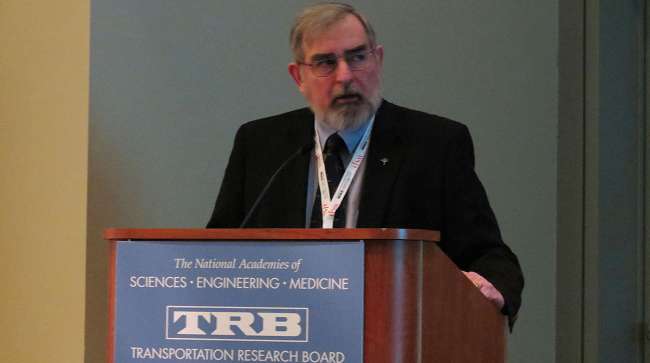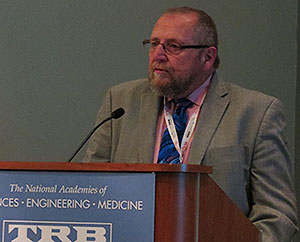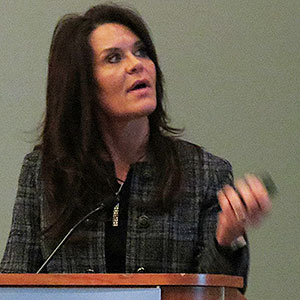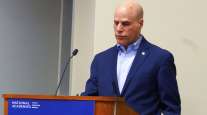Staff Reporter
State DOT Representatives Share Tips for Stretching Dollars

[Stay on top of transportation news: Get TTNews in your inbox.]
WASHINGTON — State department of transportation officials shared the creative ways they’ve completed projects with tight budgets at the Transportation Research Board’s annual meeting Jan. 13.
Verne Skagerberg, planning chief for the Alaska Department of Transportation and Public Facilities’ Southcoast Region, said the state’s short construction season and frozen ground and rivers present challenges to building and repair efforts.
The majority of Alaska is served by airports rather than highways. Alaska DOT&PF owns 237 rural airports. Skagerberg said the state has about 1,100 miles of interstate. Some 82% of the communities are not connected by road. Raw materials frequently have to be transported by barge. In the fishing community of Naknek, children’s school bus is a Cessna aircraft.
More From TRB
One technique Alaska DOT&PF has relied on is obtaining waivers to mobilize projects early. Skagerberg said the department used this method for rehabilitating the pavement on the main runway at the King Salmon Airport. King Salmon is located at the base of the Alaska Peninsula, which extends outward and includes the chain of Aleutian Islands.
“It doesn’t stop raining in the Aleutians very often. It makes it harder to pave; it makes it harder to get projects done,” Skagerberg said. “If you couple a short season with a season that’s got a lot of rain in it, we need to make the most of it.”
The DOT&PF team also worked at off times. Construction workers labored overnight to rehabilitate the runway at the airport in Sitka, which is in southeast Alaska. Skagerberg said the effort was possible because the “southeast god of rain deluge took a break.”

Thomas Mahoney by Eleanor Lamb/Transport Topics
Thomas Mahoney, director of airport engineering for the Massachusetts Department of Transportation’s Aeronautics Division, said creative funding alternatives include installing solar farms and selling advertising space on airport fences. Mahoney said federal funding is pretty constant, but state funding is “all over the place.”
“It’s a programming challenge for us,” Mahoney said. “One year it’s high, one year it’s low, so we try to work with what we have.”

Kari Campbell by Eleanor Lamb/Transport Topics
The Texas Department of Transportation’s Aviation Division found success in clustering projects for completion. Kari Campbell, director of grant management and administration for TxDOT’s Aviation Division, explained that the department introduced a pilot program to provide routine pavement maintenance to groups of airports across the state. Airports were grouped by size, pavement strength and region.
TxDOT designed four groupings. Campbell said the agency has experienced 40% savings in design fees.
“Our money isn’t stretching like it used to,” Campbell said. “Our federal and state funding has been pretty much static since 2000. We have to find creative ways to stretch our money.”
Want more news? Listen to today's daily briefing:




